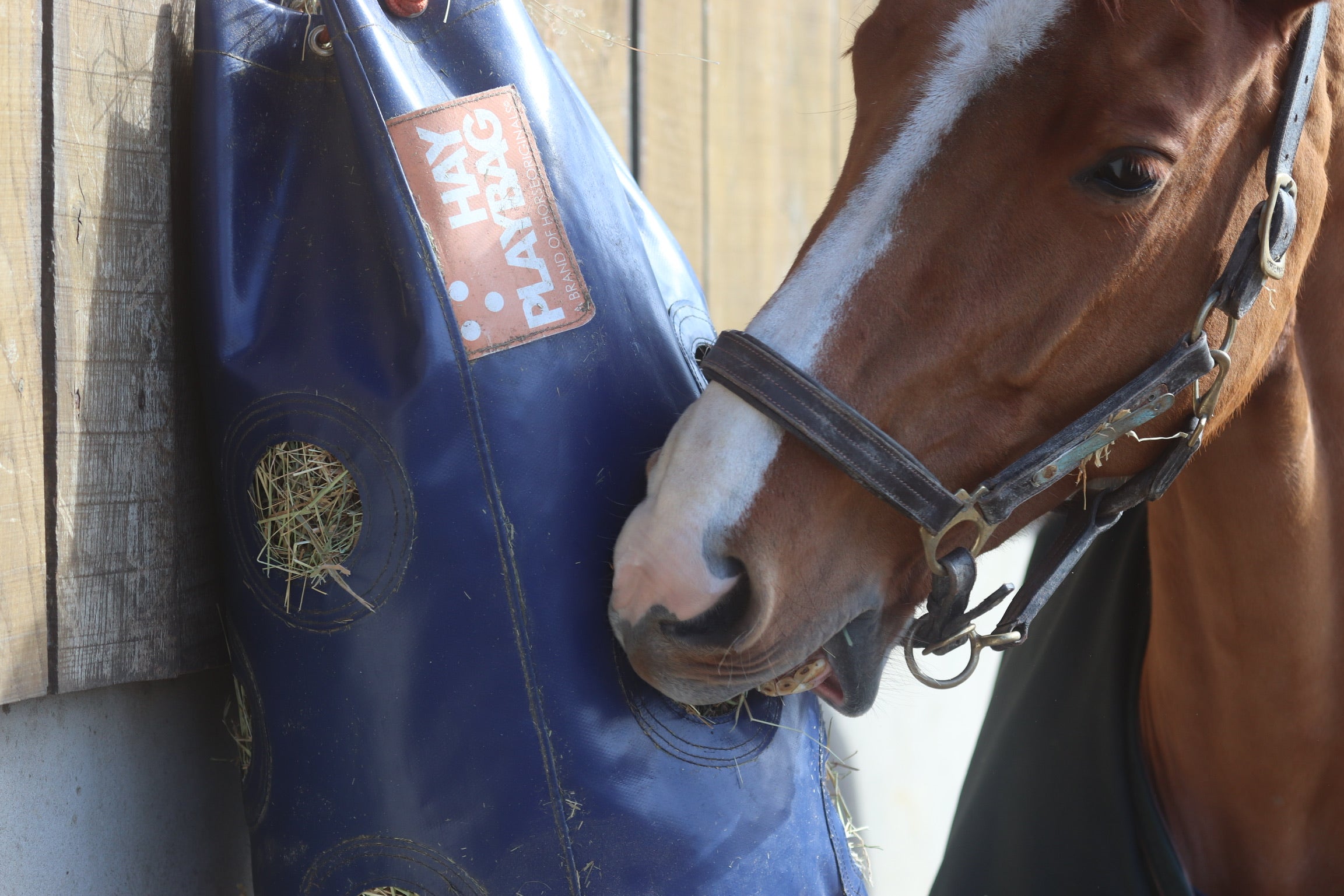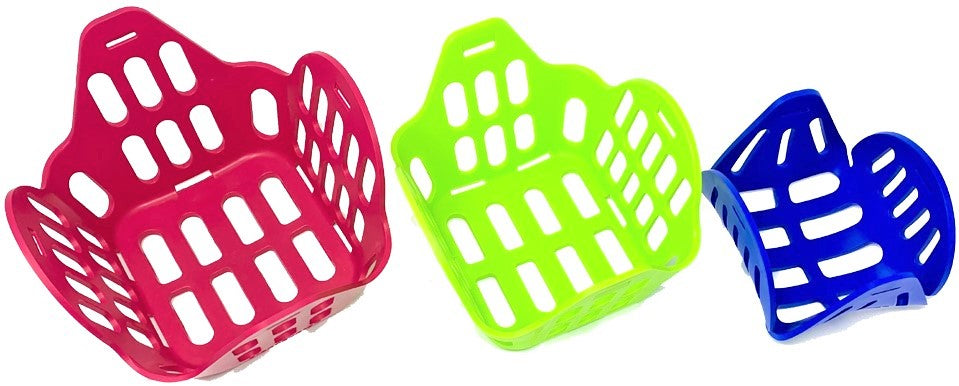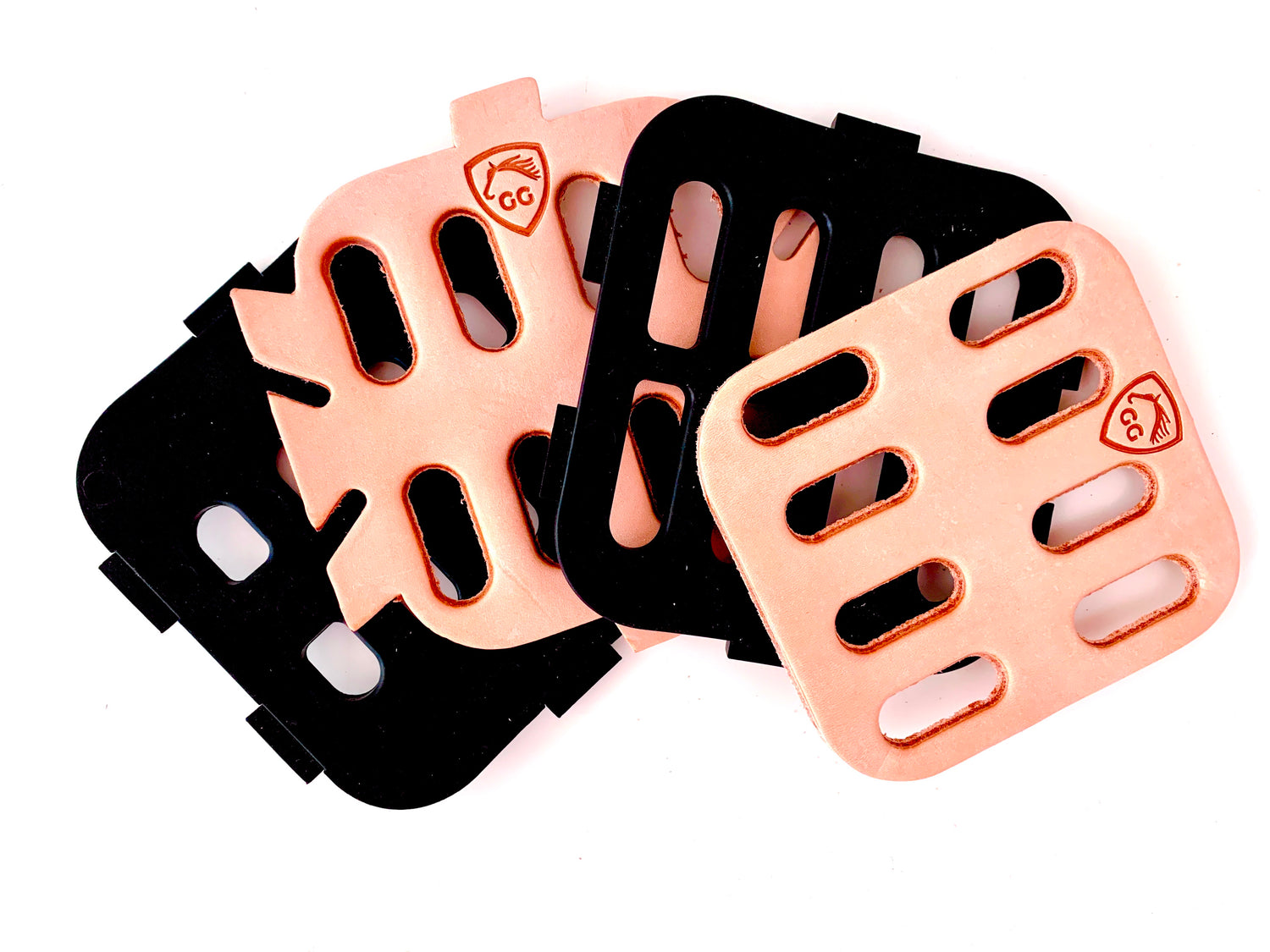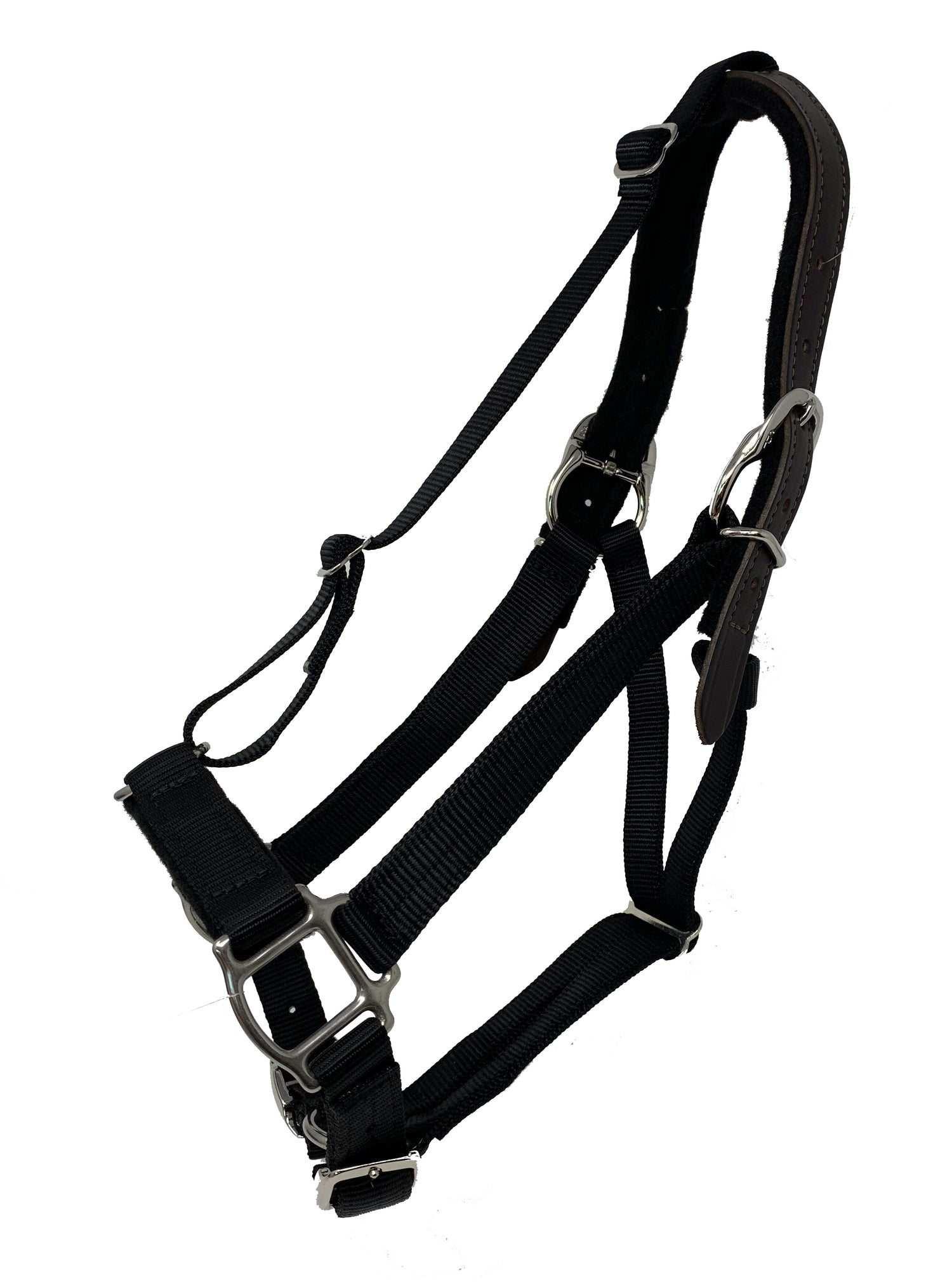Colic is the umbrella term for abdominal pain in horses and has many causes. It can be mild with a quick recovery or more severe and require hospitalization or surgery. Knowing the signs of colic and how to help prevent this condition can help keep your horse healthy. It's always in your horse's best interest to alert your vet at the first sign of discomfort. There's a lot your veterinarian can do to relieve pain and help your horse recover.

It's sometimes difficult to determine if it's colic or a happy roll.
Equine Colic: Types and Triggers
While there are many types of colic, most horse owners are familiar with the common ones - impaction, sand, and gas colic.
Impaction colic creates an obstruction.
When a horse has an obstruction in their digestive system, this roadblock prevents manure from passing through your horse. It could be that your horse is dehydrated and dried fecal balls are collecting, a tumor, enterolith (stones), or a foreign body is creating the roadblock.
Sand colic
Horses can accidentally eat sand and dirt while snacking on pasture, eating hay in a dry lot, or munching on especially dirty hay. Some horses develop pica, where they chew on dirt, wood, and other non-food items.
Over time, sand may start to collect in their digestive tract. Some sandy material may pass through completely with manure. Or, the sand can accumulate and disrupt digestion, creating colic. There may be a blockage, a reduction of intestinal muscle movement that slows digestion, irritation of the intestinal lining, or the formation of enteroliths.
Gas colic
There's a lot of activity in the horse's hindgut. This is where microbes digest forage, sugars, and starches. If there's an overload of sugars and starches, the microbes trigger a chain reaction that changes the pH of the hindgut. Many microbes die and create endotoxins, which can enter the bloodstream and trigger laminitis. The microbial feast on sugars and starches also makes a lot of gas, which can cause gas colic.

Horses accidentally eat sand and dirt, but especially in sparse pastures.
Other types of equine colic
The horse's digestive tract can also twist and turn, displacing the colon. With an intussusception, part of the gut telescopes onto itself. Functional obstructions occur when the movement of the digestive system slows, and it may be caused by disease, sand, or inflammation in the gut.
The exact type of colic or cause may not be known in many cases. It's also important to remember that some mild cases can immediately become a surgical emergency, and other times, a dramatic case can resolve itself.
Signs of colic in horses
Knowing your horse's routines, behaviors, and normal resting vital signs is the key to spotting colic early. Any unusual behavior may indicate something is happening, and then you can start to parse out signs of colic. Call your vet, too, to discuss what you notice and learn your next steps.
You may see these signs of equine colic:
- Pawing or pacing
- Excessive rolling
- Lying down and getting up repeatedly
- Extra loud or extra quiet gut sounds
- An increased pulse rate and sometimes respiratory rate
- Changes to manure in color, frequency, dryness, volume, or straining while passing manure.
- There may also be diarrhea.
- You may notice your horse bloating and many kick at their abdomen.
- Frequent urination in an attempt to relieve pressure in the belly
- Sweating abnormally
These are also signs of respiratory distress, laminitis, allergic reactions, and many other conditions. Gather as much information as possible and develop a plan with your vet.
Feeding practices to prevent colic in horses
You can do many daily things to help prevent colic, and they all relate to the digestive system. What types of hay, commercial feeds, and supplements your horse eats matters just as much as how and where they eat.
Water is another critical ingredient to digestive health. Keep plenty of fresh and clean water available. Many horses enjoy having more than one water source. If you choose to tempt your horse to drink by adding electrolytes, flavors, or juices to a water source, they need an option without additives, too.
Forages, probiotics, and other supplements for digestive health
Feeding a forage-based diet is the most natural way for horses to get calories, nutrients, and fiber for a healthy gut. This provides plenty of chewing time and keeps the digestive system moving.
Many horses benefit from more than one type of hay. Feeding one type can provide an excess or deficiency of some nutrients, and mixing hays may help alleviate that.

You can make your own slow feeder for grains and pellets by placing smooth obstacles in a feed bin.
Commercial feeds, ration balancers, grains, and other pelleted horse feeds provide nutrients to round out a roughage-based diet. Ration balancers do this without adding more calories, whereas other feeds provide extra calories, too.
Supplements are another way to balance a hay-based equine diet. They can be simple vitamin and mineral supplements or contain ingredients that target specific health problems. Joint supplements and gut health supplements fall into this category.
NSC value
When shopping for feed, notice the NSC value. This percentage indicated the amount of sugars and starches in the feed. Opt for feeds with 10% or less to refuse the influx of sugar and starches. A low NSC diet also helps horses keep a healthy weight and reduces the risk of laminitis and colic.
The NSC values of pasture will typically be highest in the spring and fall.
Gut health supplements
Some products can help horses at every stage of digestion. You can find supplements that provide ulcer care, support a healthy microbiome, prevent gas, and more.
Probiotics and prebiotics
These popular supplements are slightly different. Probiotics are live organisms that enhance your horse's good microbe population. Prebiotics are food for gut microbes and are not alive.
Hindgut buffers
Hindgut buffers help regulate the pH of the hindgut, keeping the microbe population healthy and helping prevent the big swings of pH due to sugars and starches. They may help prevent excessive gas build-up and the creation of endotoxins.
Having an equine nutritionist help you design a safe and well-rounded diet is always helpful.

The bottom of this hay net is solid, protecting the hay from sand while allowing ground feeding.
Slow feeders and hay bags for horses help create safe forage intake
A major component of equine gut health is how they eat. Slow and steady is best, allowing them maximum chewing time. Slow ingestion of food also keeps the gut moving and reduces a sudden influx of sugars and starches in the hindgut. Slow feeders and grazing muzzles support healthy eating behaviors.
If you feed your horse concentrated meals like bagged grain, feed them smaller amounts multiple times daily.
Hay bags and slow feeders for forage
It's ideal to provide forage in a hay bag slow feeder. Your horse will eat slower, move around, and eat from ground level.
When horses can graze from hay bags at ground level, they eat more naturally with their heads and necks down.
Portable hay bags are fantastic for trailer rides and horse shows or events. They are easy to clean, too, and reduce wasted hay.
When horses eat more slowly, their gut health improves.

Grazing muzzles can also help prevent overgrazing.
Grazing muzzles in the pasture for colic prevention
Just like a hay bag, grazing muzzles are wearable slow feeders. This is especially important as pasture grass typically has a higher sugar and starch content and more calories.
The grazing muzzle will help your horse find a healthy weight and slow their eating to keep those hindgut microbes happy and balanced, thus preventing colic. Grazing muzzles are excellent tools to lower the risk of laminitis, too.
When to use grazing muzzles
Your horse doesn't need to be old, overweight, or at a higher laminitis risk to benefit from a grazing muzzle.
Use a grazing muzzle when your horse:
Has a diet change. This might be a different pasture, a new boarding facility, or returning home after a long horse show. Diet changes, including the type and amount of pasture, should take about two weeks. Muzzles let your horse acclimate to the new diet.
Needs help losing or maintaining a healthy weight. Along with veterinary supervision, reduced calories in commercial feeds, and an altered exercise program, grazing muzzles allow your horse to enjoy turnout, keep food in their bellies, and move around.
Has metabolic issues. PPID, formerly Cushing's disease, equine metabolic syndrome (EMS), and insulin resistance (IR) all make a horse more susceptible to developing laminitis and colic because of sugars and starches. Muzzles reduce the volume of sugars and starches consumed, thus reducing risks.

Fitting a halter specifically designed for grazing muzzles.
Selecting a grazing muzzle for your horse
When considering a few scenarios, choosing a horse muzzle and accompanying halter is easy.
Both muzzle and halter must fit properly, with plenty of space between your horse's nose and the muzzle. Halters should include adjustable throat latches and an additional piece from the crown to the noseband to prevent horses from flipping it under their chin.
It's a bonus when you can change the opening size or when inserts can help an aggressive chewer's teeth stay healthy.
And then go for color! Vibrant colors are easy to see from a distance and are just more fun.
Implementing a safe grazing and turnout routine
When you introduce your horse to a slow-feeding hay bag or a grazing muzzle, there may be an adjustment. Here are some tips to prevent frustration.
Hay bags and slow feeders are easy to introduce, especially if there is an additional pile of loose hay to temper frustrations.
Introducing the grazing muzzle
For muzzles, horses need to learn that they only get pasture while wearing a muzzle. Watch them closely to ensure a proper fit for the first few uses. Make adjustments as needed.
Before you turn them out with a muzzle, make sure their belly is full of hay to discourage the need to binge.
Find the pasture that has grass that's about 3-6 inches. This length will stand up for easy access through the muzzle's openings. When grass is short, this encourages horses to root around, potentially aggressively ingesting sand along the way. Tall grass will fold over and make eating frustrating.
Verify that your horse's water source is wide enough for a muzzle.
Clean water helps healthy digestion!
Comprehensive Colic Prevention Strategies
Aside from diet and feeding techniques to help prevent colic in horses, you can do a few things.
Work with your veterinarian and have regular checkups
Health checks are essential for your horse's health. Vaccinations, soundness checks, and dental exams ensure your horse is healthy and address digestive issues that may lead to colic. Treating dental problems is especially important for preventing colic and choke, too.
Deworm your horse
Internal parasites contribute to equine colic. Use fecal egg counts in the spring and fall to determine your horse's parasite load. Your vet can help you decide which dewormer is needed, if any.
Reduce your horse's stress
Horses need safety and comfort for ideal sleep and stress reduction. This means they can see other horses, have comfortable bedding, have forage available 24/7, have ample turnout, and otherwise are allowed to "be a horse" as much as possible.
Supporting your horse's hoof health and addressing arthritis promotes a lower-stress environment. Even a little bit of discomfort from arthritis impacts stress levels.
Do your best to make travel and competing fun and fair for your horse. Slow feeding definitely helps with this.
Keep your horse moving.
Movement stimulates your horse's mind and digestive system. This includes your training plan and recovery days. Turnout is vital for movement, too, and gives your horse time to rest, graze, play, and interact with other horses.
Researchers have also found that horses wearing grazing muzzles move more in turnout.
Feed your horse at ground level
Eating at ground level is best when possible, especially when there's a barrier between the food and sand. Mats are perfect plates for horses, as are big tubs. Some hay bags are cleverly designed with solid bottoms to keep the hay clean.

Ground level feeding is best when possible.
Frequently Asked Questions
How do I know if my horse is at risk for colic?
You and your vet can work together to determine your horse's risk for colic. Look at diet, nutrition, how your horse eats, riding habits, fitness, and any metabolic disorders or other disease processes. You should also know your horse's typical vital signs and gut sounds. Also, monitor their manure and urine output to spot any changes early.
Can horses drink while wearing a muzzle?
Yes! Keep the water clean and fresh, and ensure the access is large enough for a grazing muzzle. A muck tub makes a great water trough if you don't already have a larger trough. You can also use blue buckets and tubs for water. Horses prefer to drink cold water but will drink more warm water, so you could offer both if possible to test what they are drawn to.
How does dental care prevent colic in horses?
Your horse's teeth are growing and changing throughout their life. They need regular dental exams and teeth floating to remain functional and pain-free. Often, sharp edges called hooks form, making chewing painful. Waves, ramps, and other irregular growth patterns also impact how well digestion starts. Improperly digested food can choke a horse or fall out of their mouth in a process called quidding. The rest of the digestive tract will be impacted, too.
Do weather changes affect the risk of colic?
They certainly can! As weather changes, many horses become dehydrated. This can occur at any time of the year. In the hot weather of summer, excessive sweating contributes to dehydration. In the winter, many horses are less inclined to drink, especially with sudden weather changes. It is best to use electrolytes before your horse needs them and provide shelter and fresh water. You can add water to feeds, soak your horse's hay, and check their hydration levels daily to keep tabs.




















